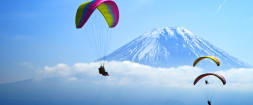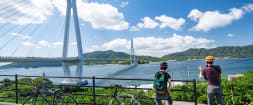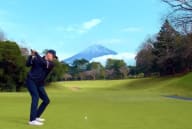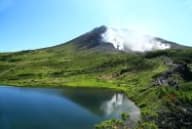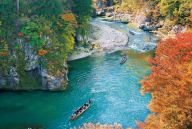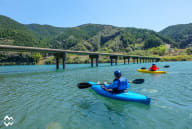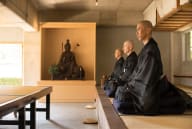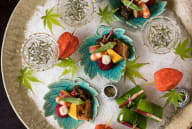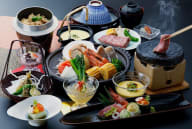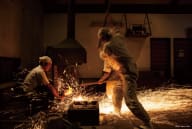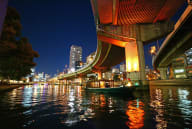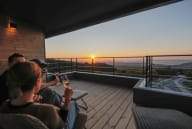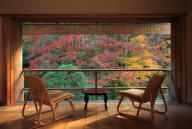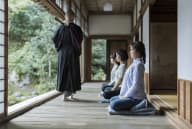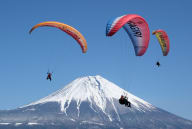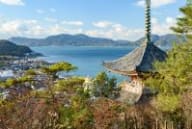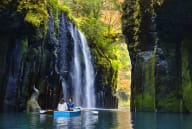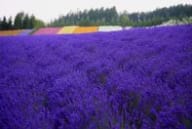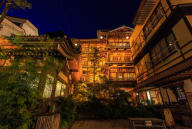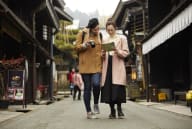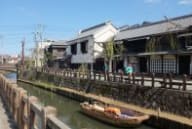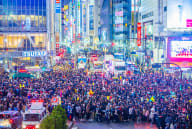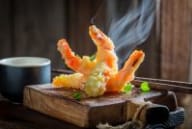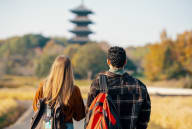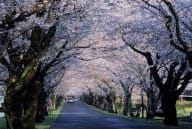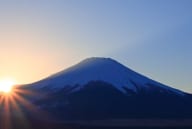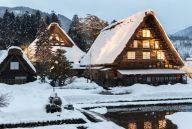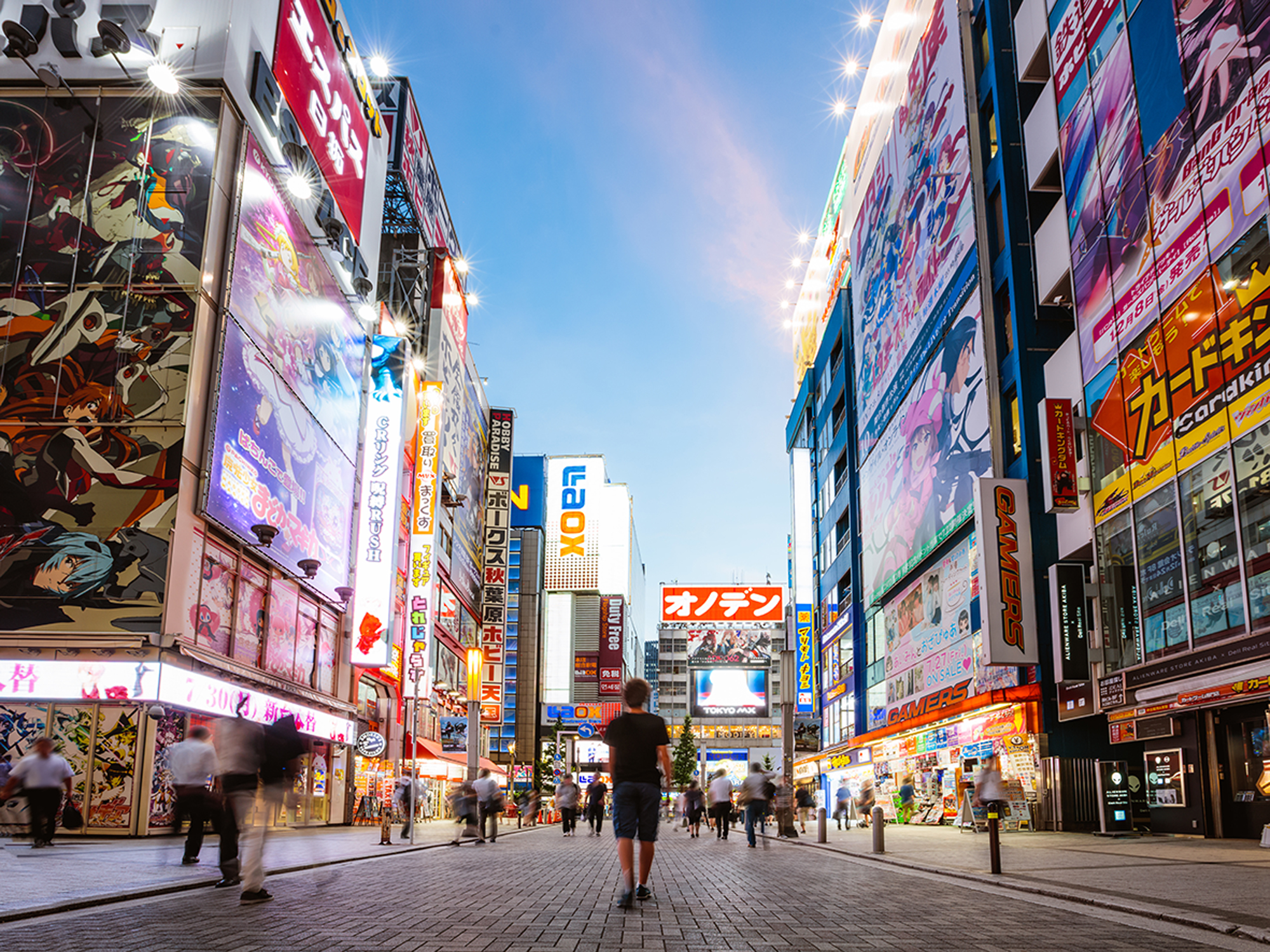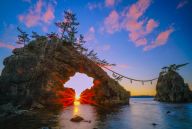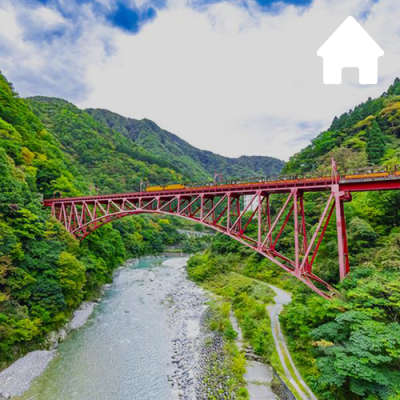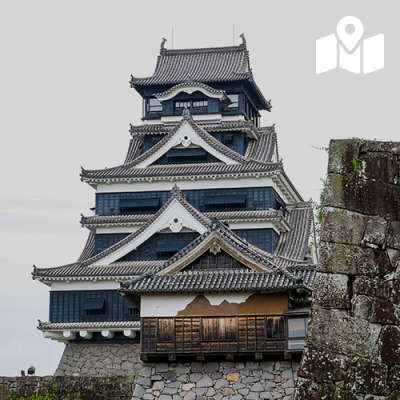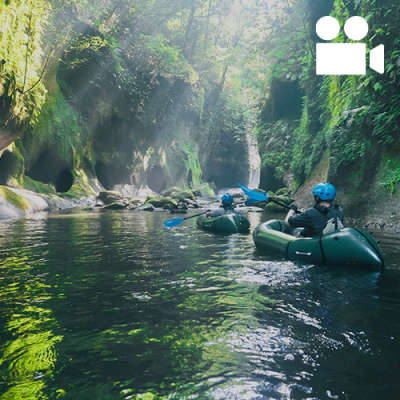Use the
Planning a Trip to Japan?
Share your travel photos with us by hashtagging your images with #visitjapanjp

Kyushu in the Southwest of Japan, is a perfect mix of beautiful nature, relaxing hot springs, rich culture and a peaceful atmosphere. After a one-hour plane ride from the busy city of Osaka, I arrived in a completely different world: quiet, calm and full of life.
As part of my visit, I explored one of the main themes of the 2025 International Exposition, “Connecting Lives,” and experienced how hot spring towns serve as vibrant communities that foster meaningful connections among people, while also discovering a rich society where people are deeply connected to the majestic natural environment.
Just upon arrival at the airport, I saw a footbath area where travelers could soak their feet in hot spring water at the airport, which I had never experienced before. Our local guide smiled and said, “I’ve been a guide here for many years, but this is the first time I’ve met someone from Mongolia.” I replied, telling her that it was my first time in Kyushu.
Our first stop was Beppu, often called the hot spring capital of Japan. We arrived on a rainy, misty day, and from the moment we stepped out, we could smell the strong scent of onsen (hot springs) in the air. The warm steam, gentle breeze, green trees, and view of the sea welcomed us like a peaceful painting.
Hot steam was rising up everywhere from the ground, between buildings, so much that it was hard to tell if it was mist or just the steam from the springs. Beppu has over 200 onsen resorts for relaxing, but there are also hot springs that are not for bathing, but just for viewing.

Hello, steamy Beppu – seen from a rainy bus ride
Jigoku Meguri – The “Hells” of Beppu
We explored the famous “Jigoku Meguri,” or “Hell Tour,” which featured eight steaming hot springs, each with its own color, smell, and mineral makeup. The one that impressed me most was Chinoike Jigoku, or “Blood Pond Hell.” Its deep red, boiling water looked like lava coming from the center of the Earth. The rising steam filled the air with heat and a smell. It was quiet all around, but the bubbling sound of the hot spring felt like nature itself was saying, “I’m here.” I used to think hot springs were only for relaxing. But standing in front of that red pool, I realized that some hot springs are so powerful and beautiful, all you can do is stop and stare.

This is where Jigoku Meguri began for me
Jigokumushi– cooking with steam
We also tried a unique meal called Jigokumushi, which means “cooked by hell’s steam.” They use the natural steam from the hot springs to cook vegetables and meat inside wooden boxes. What surprised me the most was that they don’t use any salt or spices, just pure steam. Still, the taste was perfect. The natural flavor of the food came through so clearly, and the texture was soft and comforting. Simple, but unforgettable.

Nature-cooked lunch, just steamed and served
Mount Aso power and serenity
Mount Aso is 25 kilometers wide, making it one of the largest active volcanic calderas in the world. Since we don’t have any active volcanoes in Mongolia, it was my first time seeing something like this. And honestly, it made me feel both amazed and calm at the same time. Standing on the edge of the crater, I watched light smoke quietly rise from the mountain. In the center, a green pool of water sat perfectly still, yet somehow, it felt alive. A thin white mist floated above it, and there was a unique but natural smell in the air like burnt earth and smoke.

Standing at the edge of the crater, looking down into emerald green

Volcano ahead. Emergency shelters on standby
Kumamoto Castle – a step into history
I learnt that Kumamoto Castle was originally built in 1607 by a powerful samurai named Kato Kiyomasa. From the outside, what caught my eye first were the dark blue walls and the sharp white edges of the roof. It looked like something from an old movie.
The castle was damaged by an earthquake in 2016, and some parts are still under repair. But its historical spirit is still strong. Inside, there’s a museum showing samurai culture and daily life from the Edo period. It helped me understand more about how Japanese people lived in the past. From the 6th floor, I looked out over the whole city. Outside the castle is a modern town, but inside, it really felt like I had stepped back in time.

A closer look at Kumamoto Castle’s front: classic and grand

From the 6th floor, where samurai-era rooftops overlook the city below
A warm night in a local home – Yufu Homestay
One of the warmest memories I made in Kyushu was staying with a local Japanese family for a night. The couple who hosted me were both 75 years old, and honestly, they were living the kind of life I dream of. Their house sat quietly at the base of a mountain, with a window view that looked out over peaceful nature. They grow their own rice and make ceramic art together. They grow flowers and fruit, make pizza in a stone oven, and even run an Instagram account about their daily life.
The host lady made us a home-cooked dinner with rice from their field, fresh vegetables from the mountains, and homemade plum shochu (a kind of Japanese alcohol). During dinner, we used Google Translate to chat and somehow, the conversation felt natural, warm and funny. The food, the people, the setting, everything left a simple but deep feeling I will always remember.
From my window at the homestay: rice fields and mountain air

Dinner at the homestay – the kind that warms your heart
More than just a beautiful place
What I felt most throughout this trip was that Kyushu wasn’t just a beautiful island. It felt alive as if the nature, the hot springs, the mountains and even the quiet roads were somehow breathing. The cities felt modern but peaceful. The transportation system was well-organized, so getting around was easy and fast. In one day, you could experience completely different worlds. From an active volcano to a quiet onsen.
And the food? That’s a whole story by itself. From hot spring-steamed meals to local ramen, and even whale tongue, each bite had its own character. You really have to taste it for yourself to understand.
For me, Kyushu showed a different side of Japan: a slower rhythm, a deeper feeling. And the phrase “Connecting Lives,” I didn’t just see it on signs – I felt it. Here, I felt connected to nature, to the rhythm of life and even to myself. If you’re looking for something more than a usual trip, somewhere that gives you more than just photos, I truly think Kyushu is the place to go.

①Oita Airport
②Beppu Kannawa
③Yufuin Onsen
④Kurokawa Onsen
⑤Aso
⑥Kumamoto
⑦Yanagawa Punting
⑧Nakasu
⑨Fukuoka
-
About the author
Author: Bulganchimeg Duursakh
Profile: I'm Bulganchimeg Duursakh from Mongolia. I work at the Mongolian National Chamber of Commerce and Industry, specializing in international exhibitions. I'm currently participating in a JICA training program in Osaka, Japan. In my free time, I enjoy hiking, playing table tennis, and traveling.













